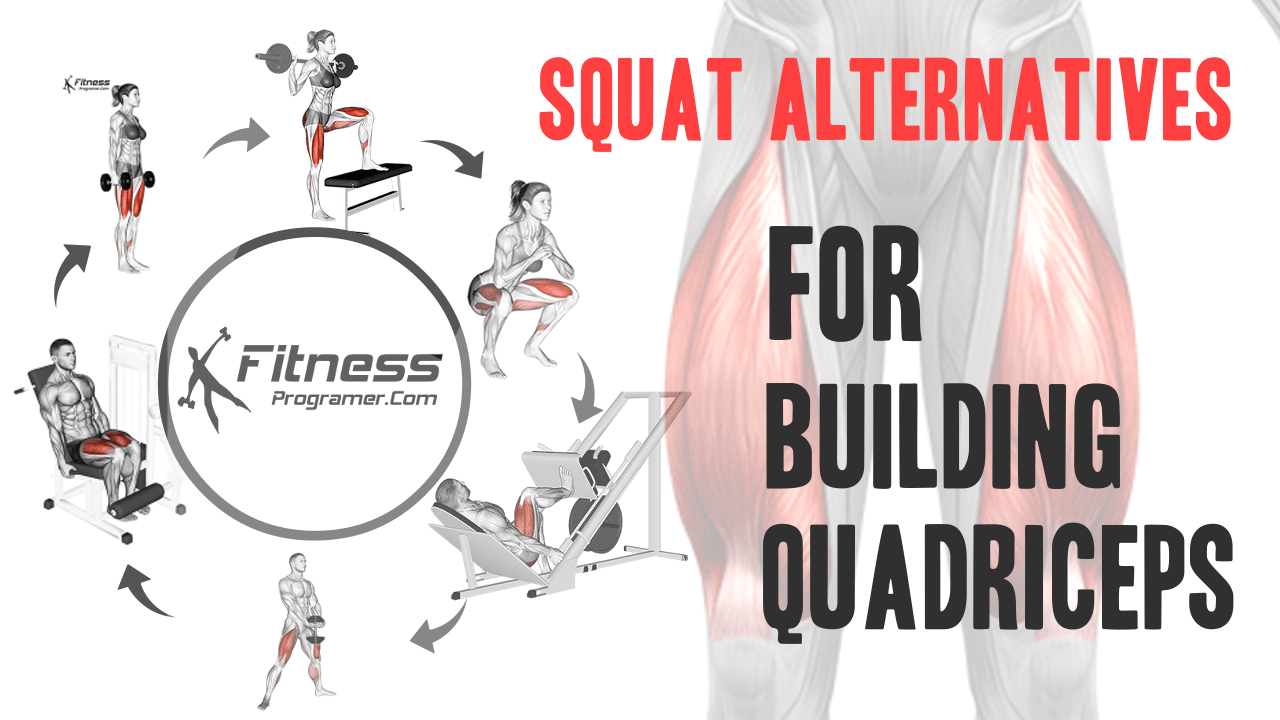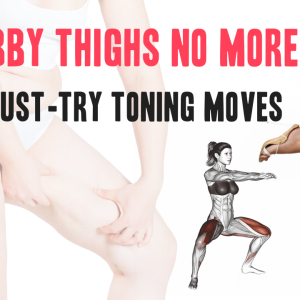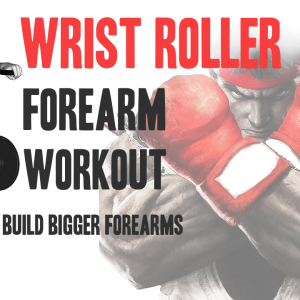Contents
Using squat alternatives can help you overcome some of the limitations of squats and provide a more well-rounded lower body training program. However, it’s important to select alternatives that are safe, effective, and appropriate for your individual needs and goals.
Building strong quadriceps is essential for anyone who wants to improve their lower body strength, stability, and performance. While traditional squats are a highly effective exercise for building quadriceps, there are many alternative exercises that can target and strengthen the quads in different ways.
Quads Anatomy
The quadriceps femoris, is a group of four muscles located at the front of the thigh. The four muscles that make up the quadriceps are the rectus femoris, vastus lateralis, vastus medialis, and vastus intermedius.
The quadriceps is the largest muscle group in the human body and is responsible for extending the knee joint and flexing the hip joint. The quadriceps muscles are essential for movements such as walking, running, jumping, and squatting. Building strong quadriceps is important for athletes, as well as anyone looking to improve their lower body strength and stability.

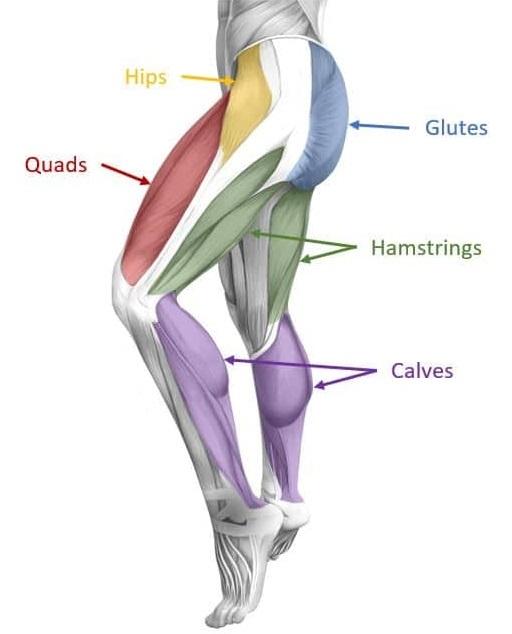
Why is it important to strengthen your quads?
Strengthening the quadriceps is important for several reasons:
Improved athletic performance: Strong quadriceps are essential for many sports and activities that require explosive movements, such as sprinting, jumping, and changing direction quickly. Building strong quadriceps can improve your speed, power, and agility.
Better balance and stability: The quadriceps muscles are responsible for keeping the knee joint stable and balanced. Strengthening the quadriceps can help prevent knee injuries and improve overall lower body stability.
Reduced risk of knee pain and injury: Weak quadriceps can contribute to knee pain and injuries, such as patellar tendonitis, patellofemoral pain syndrome, and anterior cruciate ligament (ACL) injuries. Strengthening the quadriceps can help reduce the risk of these types of injuries.
Improved daily activities: Strong quadriceps can make daily activities, such as walking up stairs, getting in and out of a chair, and carrying heavy objects, easier and less taxing on the body.
Increased metabolism: Building muscle, including quadriceps, can increase your resting metabolic rate, which can help you burn more calories throughout the day.
Overall, strengthening the quadriceps is important for improving athletic performance, reducing the risk of injury, and improving overall daily function and health.
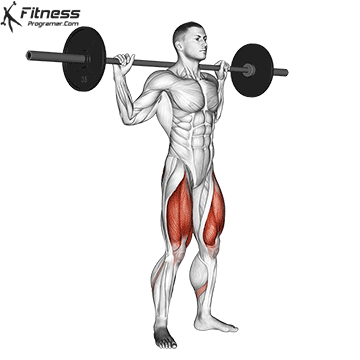
Why use squat alternatives
While squats are a great exercise for building lower-body strength and size, there are some reasons why you may want to use squat alternatives:
Joint pain or injury: If you have joint pain or injury in the knees, hips, or lower back, squats may aggravate these conditions. Using squat alternatives can help you target the lower body muscles without putting as much stress on the joints.
Mobility restrictions: If you have mobility restrictions in the hips, ankles, or upper back, it may be difficult to perform squats safely and effectively. Squat alternatives can provide a modification that works better for your body and allows you to work the lower body muscles.
Equipment availability: Squats require access to a barbell, squat rack, or other equipment, which may not be available in all gyms or home setups. Using squat alternatives that require minimal equipment can help you get a good lower body workout without needing specialized equipment.
Variety: While squats are a great exercise, doing them exclusively can become monotonous over time. Incorporating squat alternatives into your lower body training can provide variety and challenge your muscles in new ways.
Muscle imbalances: Squats primarily target the quadriceps, which can lead to imbalanced muscle development if other lower body muscles such as the hamstrings and glutes are not targeted properly. Using squat alternatives that target these other muscles can provide a more balanced lower body workout.
Using squat alternatives can help you overcome some of the limitations of squats and provide a more well-rounded lower body training program. However, it’s important to select alternatives that are safe, effective, and appropriate for your individual needs and goals.
What exercises can I substitute for squats?
While traditional squats are a highly effective exercise for building quadriceps, there are many alternative exercises that can target and strengthen the quads in different ways. Here are some alternatives to traditional squats for building quadriceps:
1- Bulgarian Split Squats
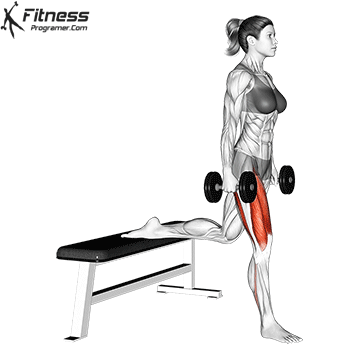
This exercise is a variation of the traditional squat that places more emphasis on the quadriceps. To perform a Bulgarian split squat, place one foot behind you on a bench or elevated surface, and lunge forward with the other leg, keeping your weight on your front foot. This exercise requires balance and stability, making it a great choice for athletes and those looking to improve their lower body strength and stability.
2- Lunges
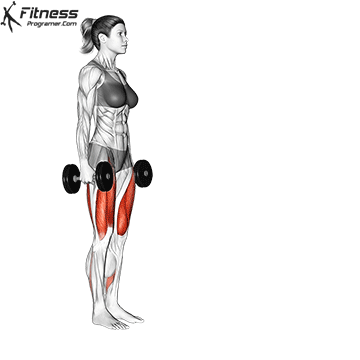
Lunges are another great alternative to traditional squats that can build quadriceps strength. To perform a lunge, step forward with one leg and bend both knees, lowering your body towards the ground. Be sure to keep your front knee directly over your ankle to prevent injury.
3- Step-ups

Step-ups are a great exercise for building quadriceps strength and stability. Stand in front of a sturdy bench or box and step up onto it with one foot, driving through your heel and squeezing your quadriceps at the top of the movement. Step back down and repeat on the other leg.
4- Hack Squat
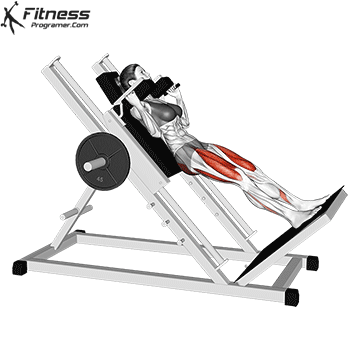
The hack squat is a variation of the squat exercise that can be used as an alternative to the traditional barbell squat. The hack squat primarily targets the quadriceps muscles, but it also works the hamstrings, glutes, and calves to some extent. It can be a great alternative to the traditional barbell squat for those who have trouble with the exercise or want to switch up their lower body routine.
5- Jump Squats
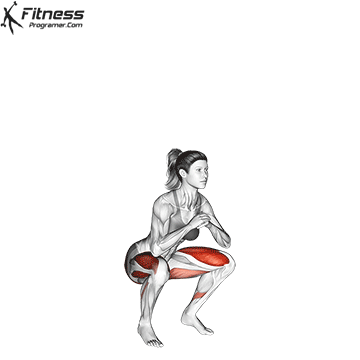
This plyometric exercise is great for building explosive power in the quadriceps. Start in a squat position and then jump explosively into the air, landing back into a squat position. This exercise not only builds quadriceps strength, but also improves cardiovascular fitness and burns calories.
6- Leg Extensions
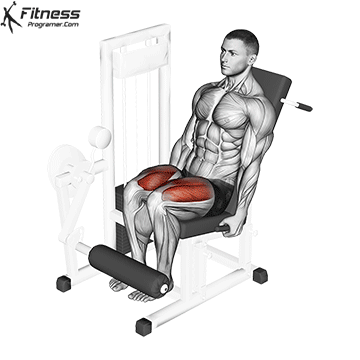
This machine exercise isolates the quadriceps muscles and can be effective for building strength and size. Sit on a leg extension machine and place your feet under the pads. Slowly extend your legs out in front of you, squeezing your quadriceps at the top of the movement. This exercise is great for beginners or those with knee issues who may struggle with traditional squats.
Single Leg Press
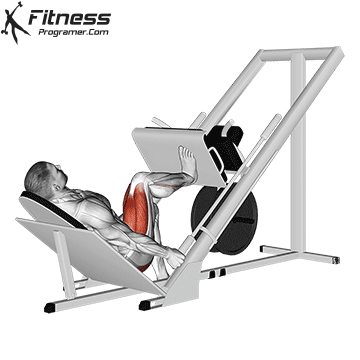
This machine exercise is similar to the traditional leg press, but requires you to press the weight using only one leg at a time. This unilateral exercise can be effective for targeting and building quadriceps strength and size.
The Bottom Line
When incorporating alternative exercises into your quadriceps workout routine, it’s important to focus on proper form and gradually increase the weight or intensity over time. Be sure to warm up before beginning any exercise and cool down and stretch after your workout to prevent injury and promote recovery.

